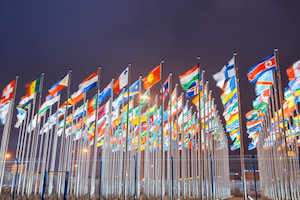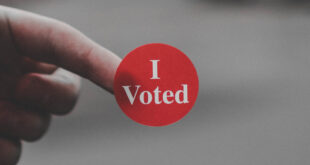– The study of flags is called vexillology. The Latin word for flag is vexillum – a vexillarius came to mean a standard-bearer.
– The flags of Chad and Romania are identical (blue, red and yellow vertical stripes).
– Ireland and Côte d’Ivoire’s flags are identical in colour (orange, white, green stripes) but the order of the stripes is reversed.
– Turn an Indonesian flag upside down and it becomes a Polish flag.
– The Netherlands and Luxembourg both have the same order of red, white and blue horizontal stripes but the Dutch blue is darker.
– The flag of Belize is the only one to feature human beings. It contains a central badge with a black and a white man standing beneath a mahogany tree, to represent the country’s logging industry.
– Every year, the Boy Scouts of America and military veteran organisations such as the American Legion burn thousands of US flags between them. This because Section 176 (k) of the US Flag Code (a set of rules on the correct treatment of the Stars and Stripes) provides that: “The flag, when it is in such condition that it is no longer a fitting emblem for display, should be destroyed in a dignified way, preferably by burning.” Flag burnings (or “retirements”, to use the official term) are usually held on Flag Day, June 14.
– The Union Flag flies over Buckingham Palace when the Queen is not there.
– Her presence, conversely, is indicated by the Royal Standard.
– The real “Blue Peter” is not the flag with a ship on it as seen in the much-loved the BBC programme. In the ICS (International Code of Signals) system of maritime signal flags, it is “P” – a blue square with a white centre – and it means “We’re about to leave harbour” (or “My nets are snagged”).










Join the Discussion
Type out your comment here:
You must be logged in to post a comment.